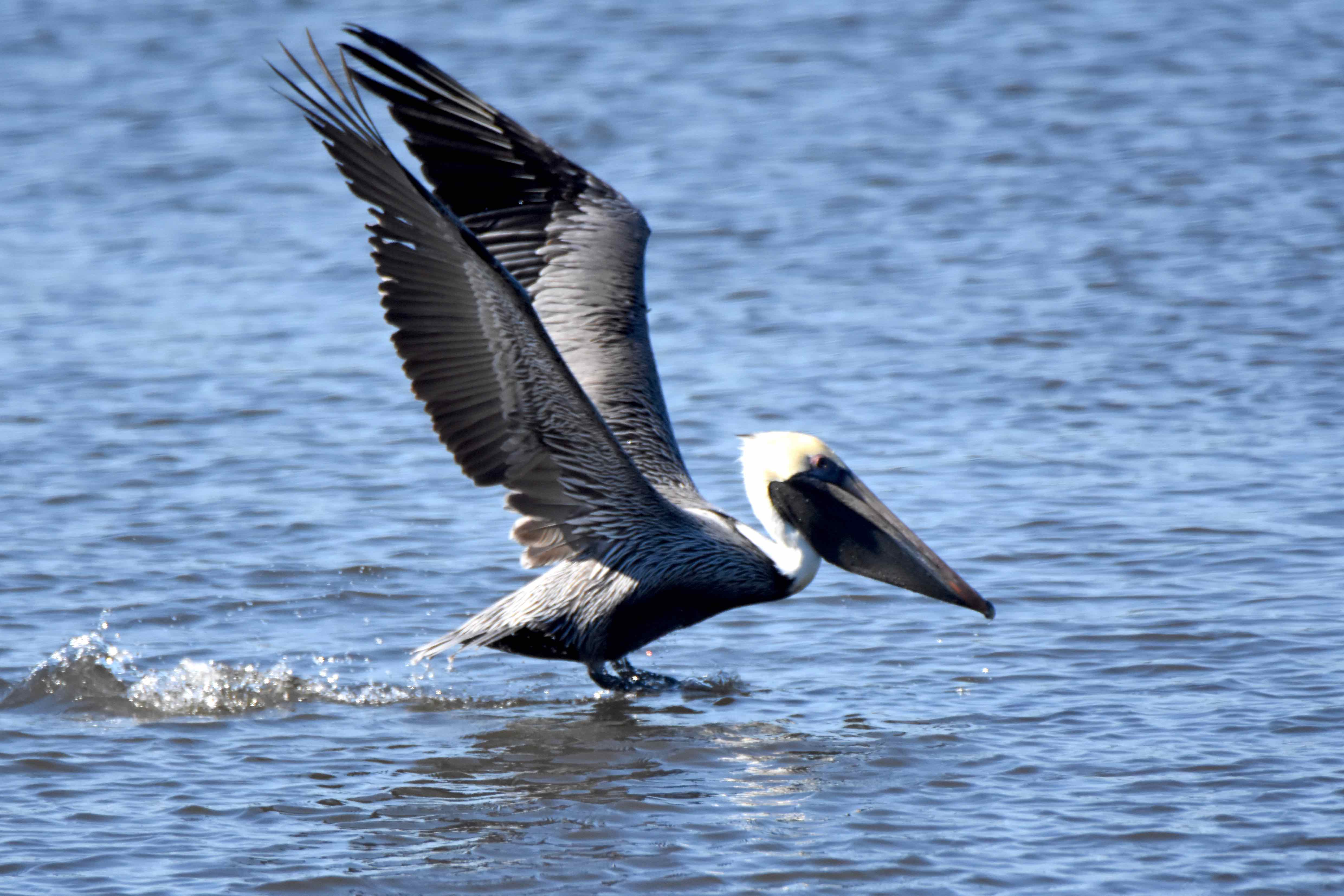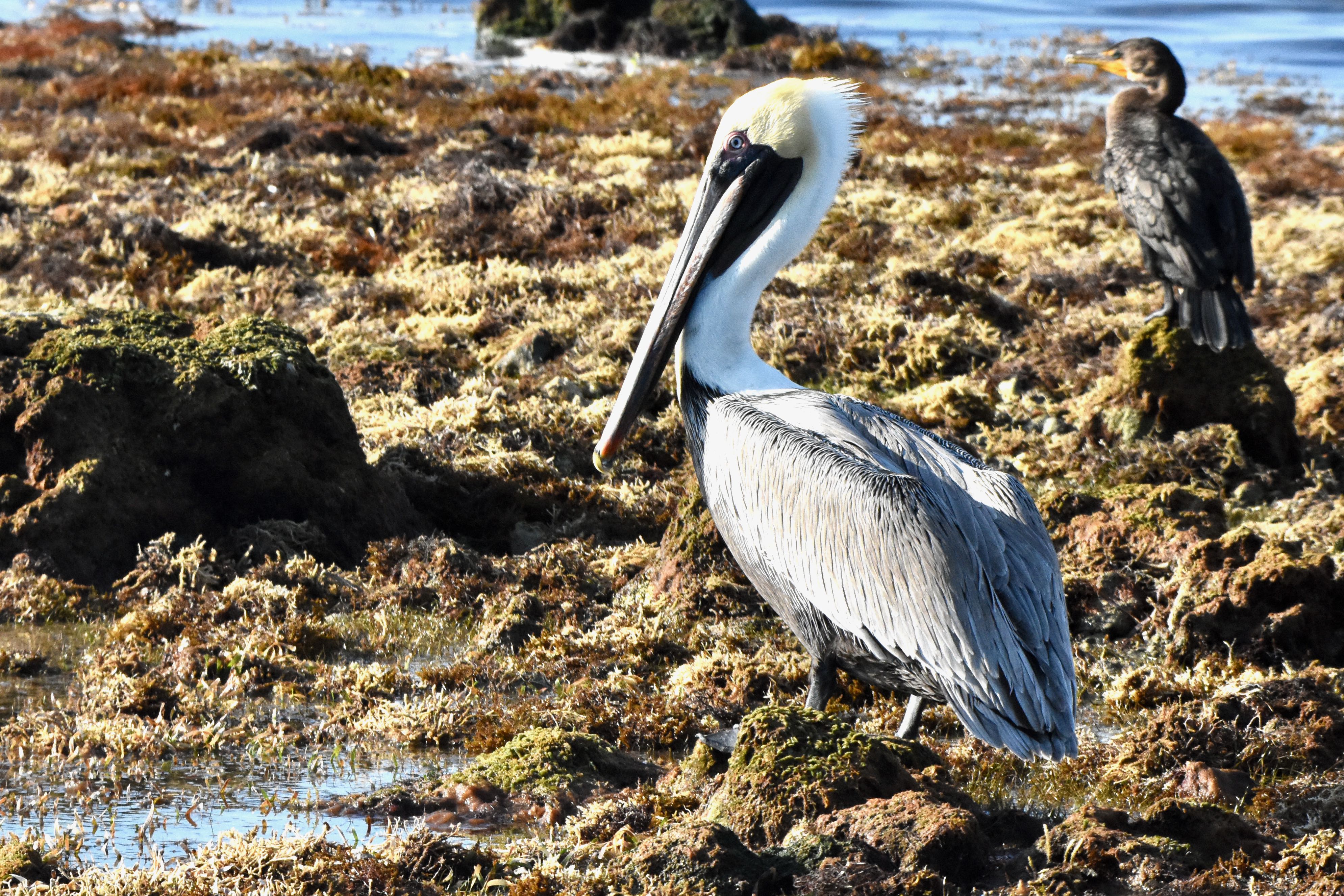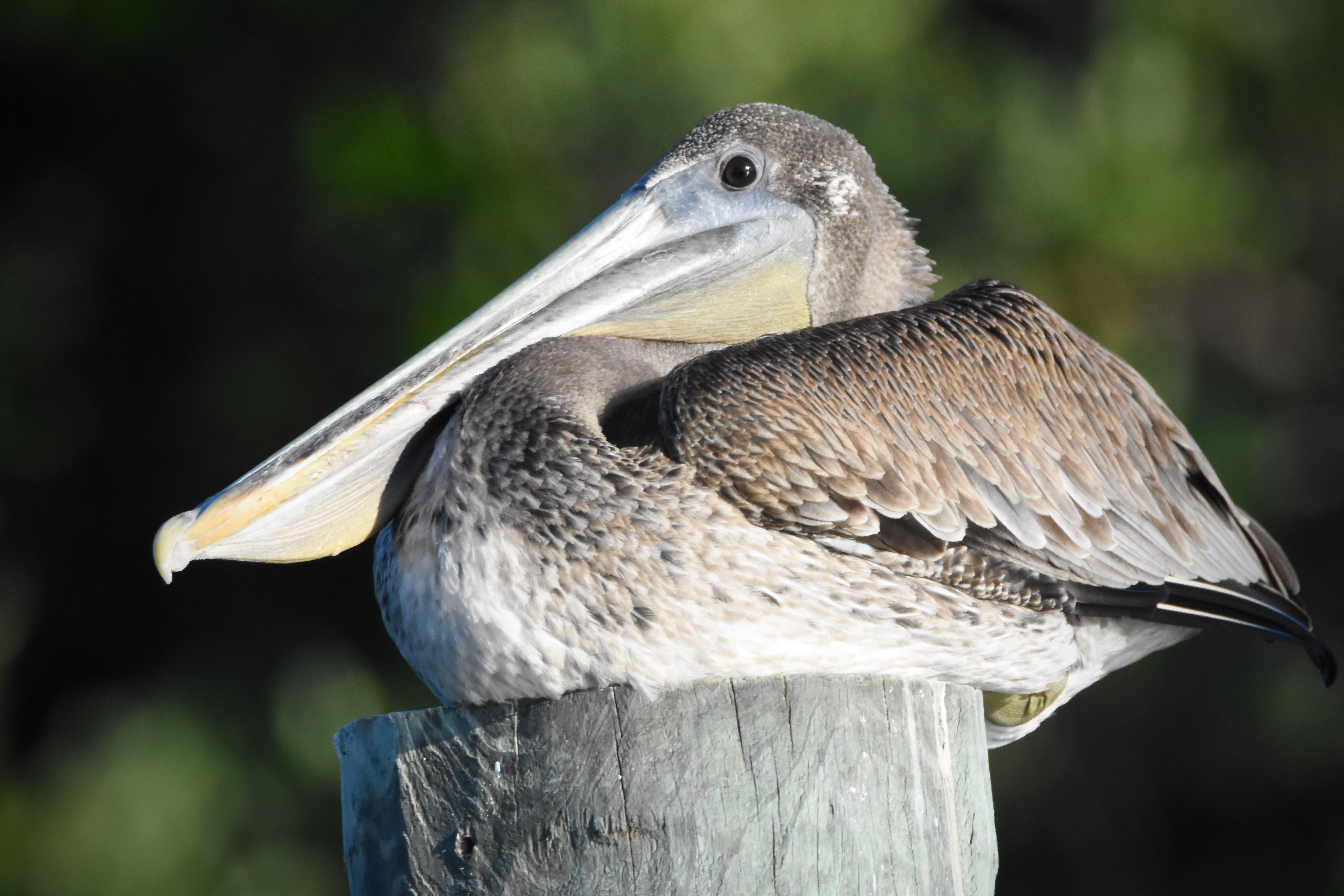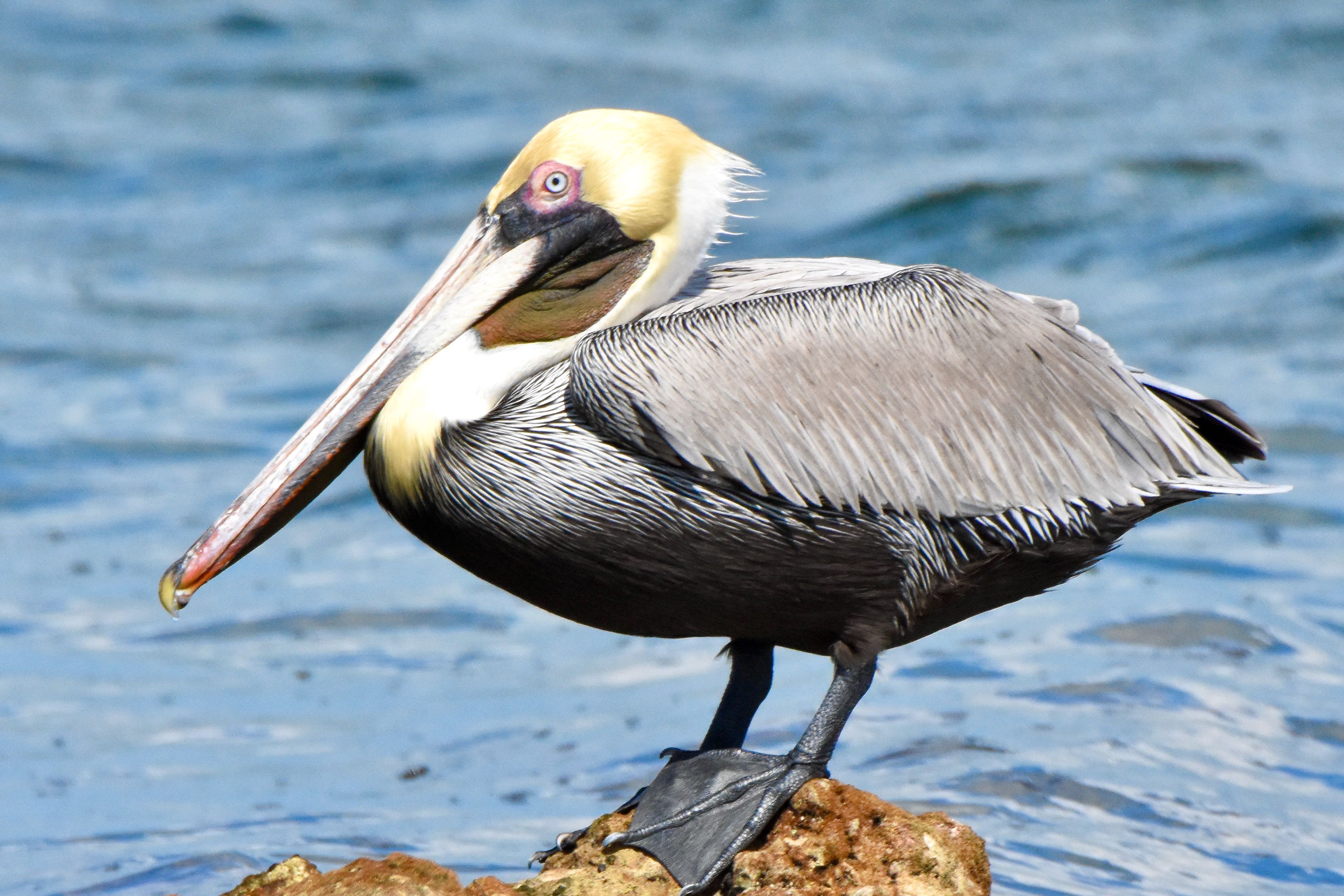
Brown pelican, photographed at Snook Islands Natural Area, Lake Worth Beach, Palm Beach County, in March 2018.
The brown pelican, Pelicanus occidentalis, is unmistakable, with its long, thin neck and equally long beak and stretchy pouch and huge, stocky body.
It's a coastal bird, at home in California, Mexico's west and east coasts, the Gulf Coast and the Atlantic seaboard from Florida to Virginia. They're found as far south as Chile's central coast and the Galapagos Islands along the Pacific, and to Venezuela along the Atlantic. Brown pelicans rarely stray inland, preferring to stay near salt water rather than venture inland. They are resident birds in Florida, but migrant pelicans expand the population in the cooler months. Conversely, Florida-born birds help supplement the pelican populaton of other states.
They will soar 60 feet or more above the surface, then suddenly dive-bomb into the water and use that pouch to scoop up a fishy meal. The secret to their success: incredible eyesight, and air sacs beneath their skin that cushion the blow when they hit the water.
The pelican's pouch can hold as much as three times the content of its stomach and as much as three gallons of water scooped up with its catch. The bird will squeeze the water out, then swallow the fish and hold them in its esophagus.
Brown pelicans have a wingspan that can exceed seven feet and a body length nearing five feet. But it's also the smallest of the seven pelican species worldwide. Compare it with the other pelican seen in these parts, the white pelican. Their bodies are gray-brown, with white necks and yellow heads; immatures have brown heads and necks (compare the middle photo below with the other two).
They are exceedingly common birds in South Florida, but it wasn't always that way. Near the turn of the 20th century, brown pelicans were heavily hunted for their plumage. In 1903, President Theodore Roosevelt established Pelican Island near Sebastian in Indian River County as the nation's first national wildlife refuge to give the bird a measure of protection.
The passage of the Migratory Bird Treaty Act in 1918 banned their hunting and that of other birds. According to the U.S. Fish and Wildlife Service, brown pelicans continued to be targets for commercial fisherman, who blamed the birds for poor catches. In the 1940s, with the advent of DDT, pelican populations began to plummet and by the 1960s, they disappeared from parts of their range. According to the Florida Fish and Wildlife Conservation Commission, Florida's pelican population wasn't hit as hard as others, because DDT wasn't used as widely as it was in other regions.
In 1970, the Fish and Wildlife Service listed the pelican as endangered; the Environmental Protection Agency banned DDT, and pelican populations began to recover. By 1985, pelicans were taken off the endangered list in parts of their range, including Florida, but they still are listed in Texas and Louisiana, aka the Pelican State.
Brown pelicans will nest on off-shore islands, sometimes on land in areas protected by dense vegetation, as well as in trees. On land, they will make a simple depression and line it with grass or make a more elaborate structure using sticks, grass and other vegetation. Tree nests are made of sticks and grass and leaves.
In South Florida, nesting season begins in the fall; in central and northern Florida, it's early spring. Males select the site and gather the material, while females do the construction work. Pelicans will have one brood a year, with as many as four chicks. Both parents take turns incubating the eggs by standing on them, and yes, accidents do happen. The eggs require four to five weeks of incubation.
It takes about three months for the young to mature to the point where they can take care of themselves, but it will take at least three years before they can reproduce.
You can spot brown pelicans at pretty much any beach in the Sunshine State, but if you want to see brown pelicans in large numbers, if you want to see them nesting, we suggest a trip to Pelican Island National Wildlife Refuge.
Brown pelicans are members of Pelecanidae, the pelican family, and year-round residents of Florida.
Snook Islands Natural Area



